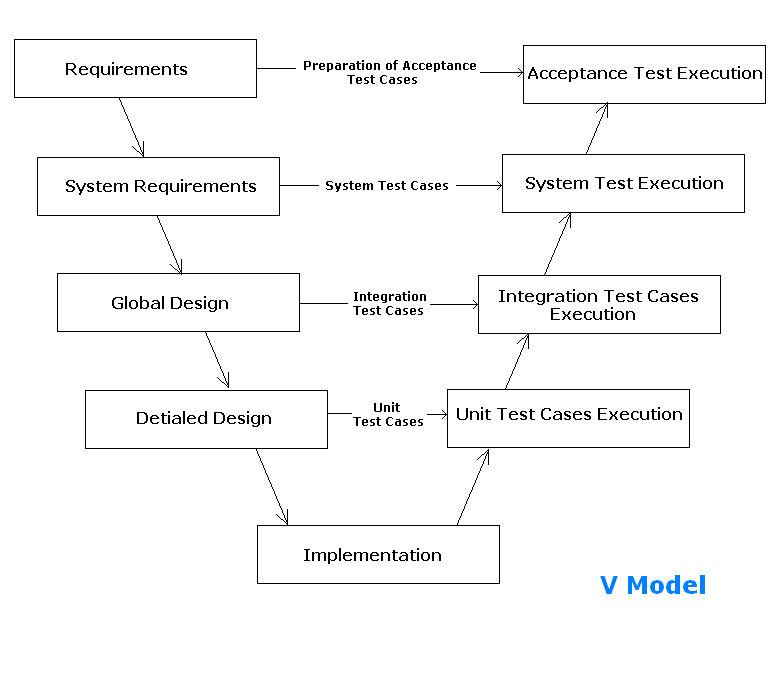In the basic Waterfall model process seen some disadvantages or limitations in the model which started a new SDLC model. As we seen in the Waterfall model the issues found in the end of the SDLC, this is due to the testing is occurred in the end phases of the you SDLC. To overcome this problem the V-Model is comes into the picture. It is always better to introduce testing in the early phase of SDLC, as in this model the testing activity gets started from the early phase of the SDLC.
Before starting the actual testing, testing team has to work on various activities like preparation of Test Strategy, Test Planning, Creation of Test cases & Test Scripts which is work parallel with the development activity which help to get the test deliverable on time.
V Model Software Development Life Cycle

In the V-Model Software Development Life Cycle, based on same information(requirement specification document) the development & testing activity is started. Based on the requirement document developer team started working on the design & after completion on design start actual implementation and testing team starts working on test planning, test case writing, test scripting. Both activities are working parallel to each other. In Waterfall model & V-model they are quite similar to each other. As it is most popular Software Testing Life Cycle model so most of the organization is following this model.
The V-model is also called as Verification and Validation model. The testing activity is perform in the each phase of Software Testing Life Cycle phase. In the first half of the model Verification testing activity is integrated in each phase like review user requirements, System Design document & in the next half the Validations testing activity is come in picture.
Typical V-model shows Software Development activities on the Left hand side of model and the Right hand side of the model actual Testing Phases can be performed.
In this process “Do-Procedure” would be followed by the developer team and the “Check-Procedure” would be followed by the testing team to meets the mentioned requirements.
In the V-Model software development life cycle different steps are followed however here we will taking a most common type of V-model example. The V-model typically consist of the following phases:
1. Unit Testing: Preparation of Unit Test Cases
2. Integration Testing: Preparation of Integration Test Cases
3. System Testing: Preparation of System test cases
4. Acceptance Testing: Preparation of Acceptance Test Cases